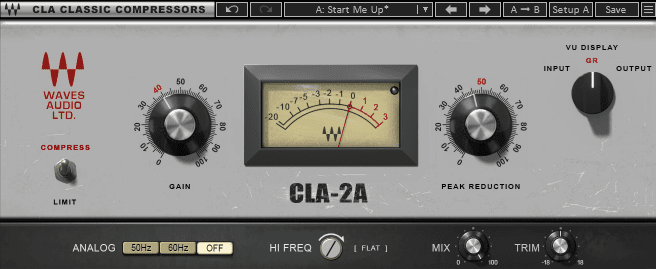Andrew Scheps is a legendary audio engineer known for his work with artists like Adele, Red Hot Chili Peppers, and Jay-Z.
His mixing style is recognized for its clarity, depth, and unique character.
Among his many techniques, one that stands out is his vocal mixing trick.
It allows vocals to cut through even the densest mixes without sounding harsh or unnatural.
Understanding this trick can elevate your vocal mixes to a professional level.
Andrew Scheps Vocal Mixing Trick
To replicate the Andrew Scheps vocal mixing trick, you’ll need the following tools:
- Pultec-style EQ: This classic equalizer is key for its ability to simultaneously boost and attenuate specific frequencies, creating a smooth and natural sound.
- LA-2A Compressor: A tube-based compressor that provides gentle, musical compression. It’s particularly effective on vocals.
EQ and Compression Setup
Start with the first instance of the Pultec EQ.
Cut the low end at 100 Hz by 2.8 dB using a wide bandwidth setting, ensuring clarity without making the vocal sound thin.
It's important to mention that the Pultec EQ doesn't use decibels (dB), but I'll use this metric to simplify things for you.
Boost the high end at 8 kHz by around 3-4 dB to add brightness and presence, helping the vocal cut through the mix naturally.

Next, apply the LA-2A compressor, setting it to compress only the high frequencies by turning the "emphasis" knob fully counterclockwise.
Adjust the gain reduction until you achieve 2-3 dB of compression on the vocal peaks.
This smooths out the performance while maintaining a natural and musical dynamic response.
Make sure that you choose an LA-2A emulation that has an emphasis knob.

Once the compression is in place, use a second instance of the Pultec EQ.
Boost the low end at 100 Hz by 2.8 dB to bring warmth and body back into the vocal.
Finally, make a slight cut of 1.8 dB at 8 kHz to balance the tone and prevent the vocal from sounding too sharp.
Make sure you use a wide bandwidth for both Pultec inserts.

These tools are essential because they allow you to shape the vocal’s tone, control dynamics, and add character without over-processing.
Andrew takes a similar approach on his mix bus chain, where tone and balance are built into the final output.
This technique works because it balances clarity and warmth in a way that feels natural to the ear.
Cutting low frequencies at the start prevents muddiness, while boosting the high end adds presence.
Compressing only the high frequencies keeps the vocal smooth and controlled without losing its sparkle.
Reintroducing the low end after compression ensures the vocal retains its fullness, and the slight cut in the high frequencies removes any harshness caused by processing.
The result is a vocal that is both clear and warm, standing out in the mix without sounding artificial.
Common Mistakes to Avoid When Using This Trick
- Over-Compression: Applying too much compression can make the vocal sound lifeless. Aim for subtle gain reduction.
- Excessive High-End Boost: Over-boosting the high frequencies can lead to harshness and sibilance. Keep the boost moderate.
- Ignoring the Mix Context: Always adjust the settings while listening to the full mix. A vocal that sounds great in solo may not fit well in the mix.
Wrap
Understanding and applying Andrew Scheps’ vocal mixing trick can significantly improve your mixes.
This technique is a testament to the power of thoughtful processing and attention to detail.
By combining EQ and compression in a strategic way, you can create vocals that stand out and connect with listeners.
Whether you’re working on a dense mix or a minimal arrangement, this trick will help you achieve professional-quality vocals every time.
If you enjoyed this tutorial, make sure that you also check out the Michael Brauer Parallel Vocal Compression Technique.